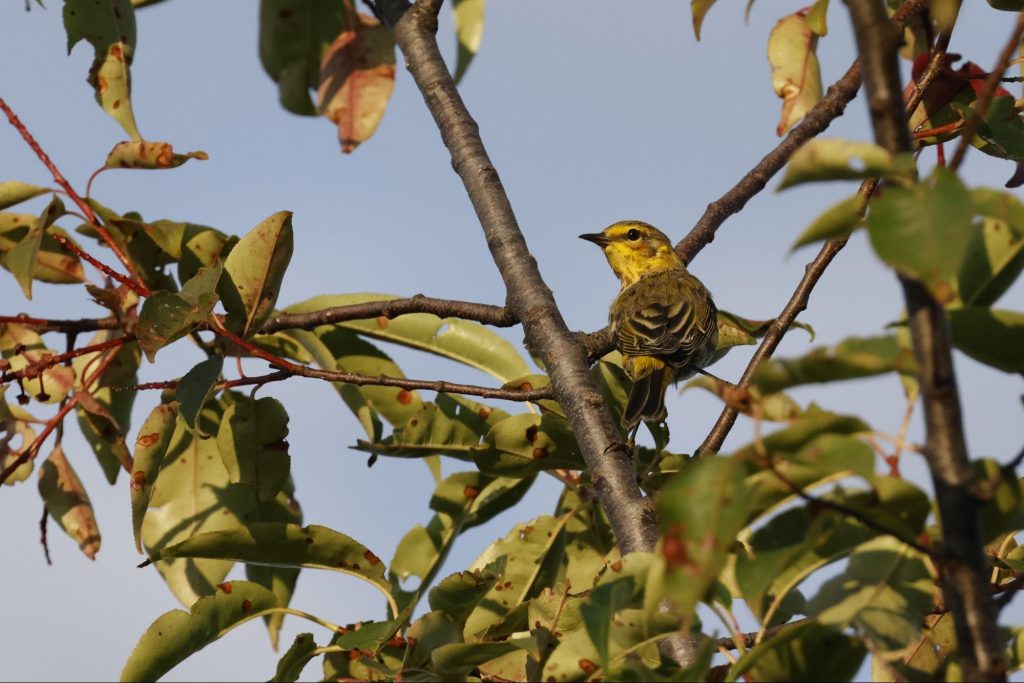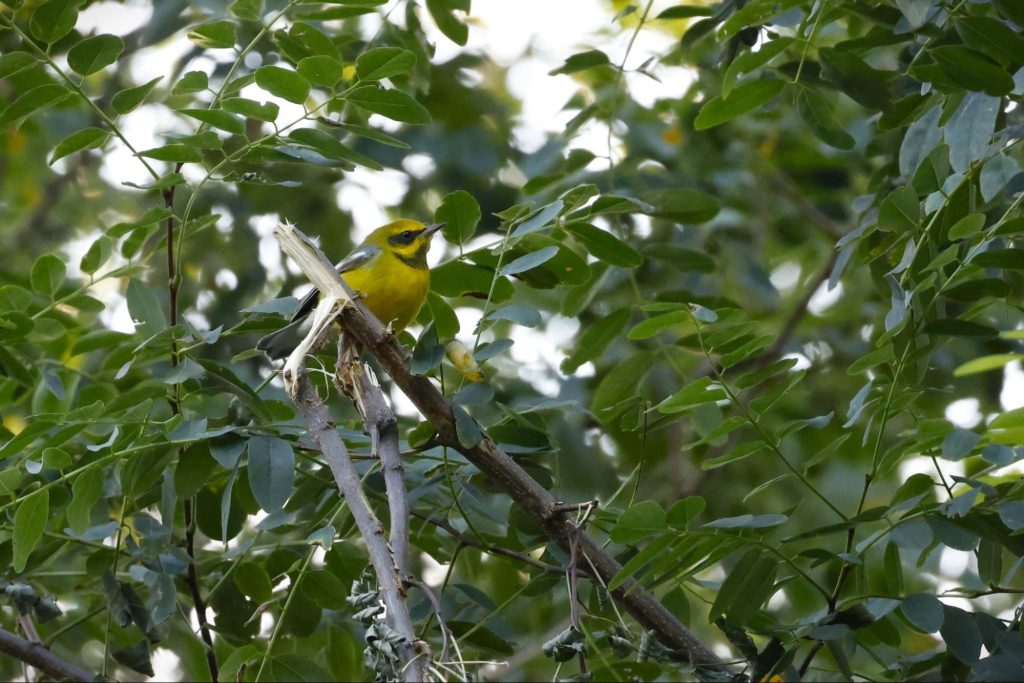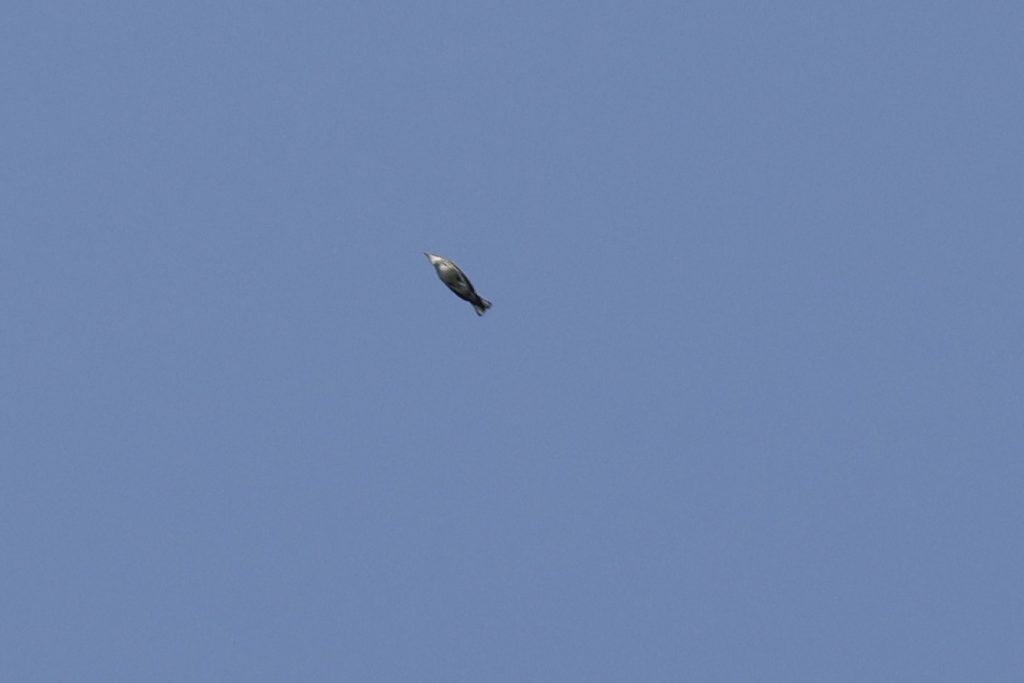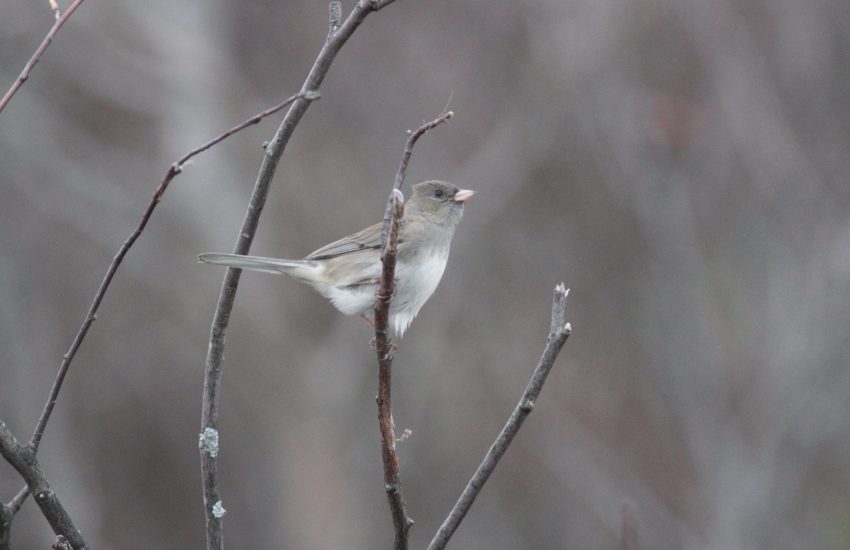Early August at the Turkey Point Morning Flight Count
August 1st was Day One of the Turkey Point Morning Flight Count. A cold front rolled in and brought with it a couple of surprises – a Rose-breasted Grosbeak and two Cape May Warblers! Both species are generally not seen until later in the season. We have learned from the previous two seasons that this may be the best place in the Mid-Atlantic to observe large numbers of Cape May Warblers during migration. Ironically, more of them were counted at Turkey Point than at Cape May in both of the previous seasons. Sightings in Maryland on August 1st are unprecedented; in fact, August 12th was the previous earliest record of Cape May Warblers in Maryland!

Cool temperatures and winds out of the northeast continued into Day 2, bringing a fresh batch of migrants. The highlights of the day were a Lawrence’s Warbler (Blue-winged Warbler x Golden-winged Warbler hybrid) and a Cerulean Warbler, a new species for the count. While Cerulean Warblers are known to be early-season migrants, they are rarely detected away from their breeding grounds in Maryland. Also new for the count was an Upland Sandpiper, which was heard calling overhead as it passed the point on Day 3.

Also moving ahead of schedule were Blackburnian Warblers, Yellow-rumped Warblers, Magnolia Warblers, and Tennessee Warblers – all of which made a pass at the point by the end of the first week. Cape Mays and Blackburnians continued to be seen regularly. Yellow-rumped and Tennessee Warblers made several appearances as well.

Interestingly, warblers are moving relatively on schedule in Cape May, New Jersey. However, there is a strong presence of Black-and-white Warblers at Cape May while Turkey Point has had only a few so far this season. The Dans Rock count has turned up a couple of early migrant warblers as well, but migration is on time there for the most part. Although they are on schedule, the number of warblers moving past Dans Rock are much higher than they were at this time last year. This begs the question – why are there so many warblers already? One possible explanation is the Canadian wildfires over the summer forcing them out of their breeding grounds early.
It will be exciting to see how the data from the Dans Rock, Turkey Point, and Cape May morning flight counts compare throughout the rest of the season and in years to come!
Aaron


